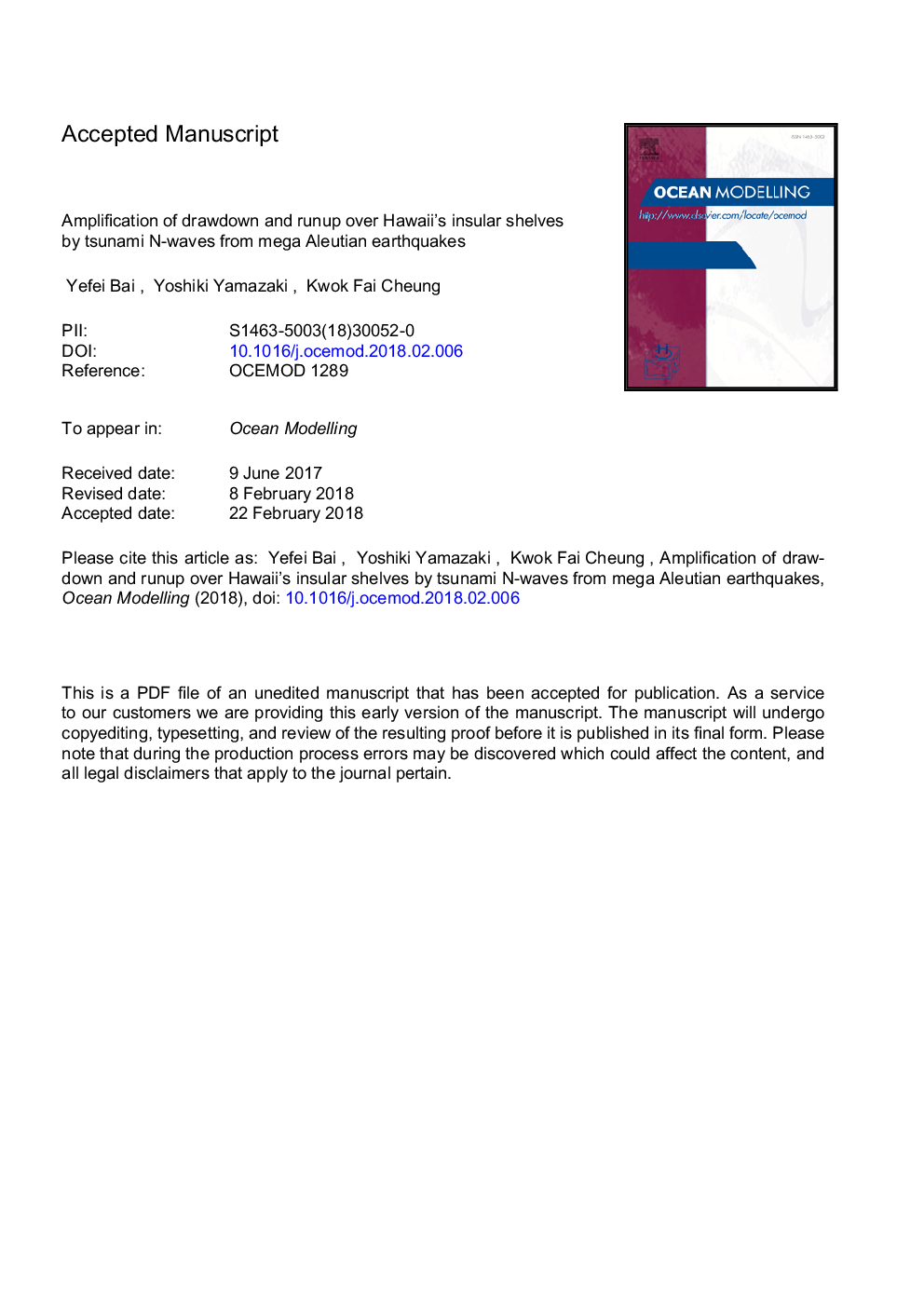| Article ID | Journal | Published Year | Pages | File Type |
|---|---|---|---|---|
| 8886521 | Ocean Modelling | 2018 | 39 Pages |
Abstract
The latest tsunami evacuation maps of Hawaii include an extreme scenario triggered by an Mw 9.3 Aleutian earthquake with large near-trench rupture. The tectonic plate motion produces concentrated seafloor uplift toward the deepest part of the trench generating a tsunami with strong non-hydrostatic characters. A parametric study shows the skewed seafloor uplift produces a dispersive leading crest followed by a prominent trough in the form of an N-wave. The trough maintains its depth across the ocean in the absence of side lobes and dispersion. Shifting of the uplift toward the trench tends to deepen the trough, but has diminishing effects on the wave crest away from the source. While the attenuated leading crest produces relatively moderate runup on north-facing shores of the Hawaiian Islands, with matching of the N-wave and shelf resonance periods, the trough produces an impulsive drawdown followed by an energetic upswing with unprecedented runup for a far-field tsunami. A set of control computations without dispersion reaffirms that a non-hydrostatic model is essential to account for these complex wave processes from the source to the shore. This case study highlights the unique tsunami hazards posed by the Aleutians to Hawaii and the role of wave troughs in delineating the impacts for hazard assessment and engineering design.
Keywords
Related Topics
Physical Sciences and Engineering
Earth and Planetary Sciences
Atmospheric Science
Authors
Yefei Bai, Yoshiki Yamazaki, Kwok Fai Cheung,
